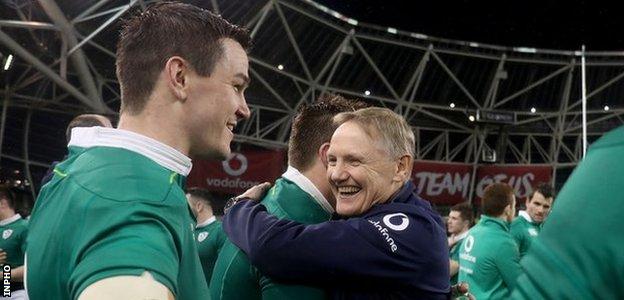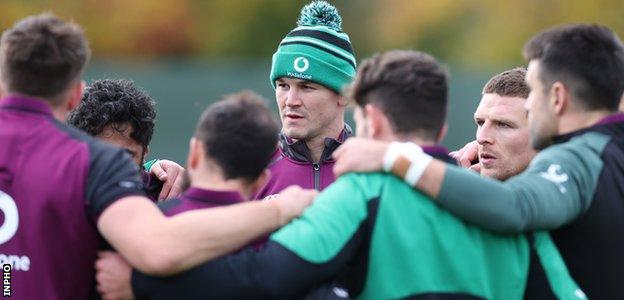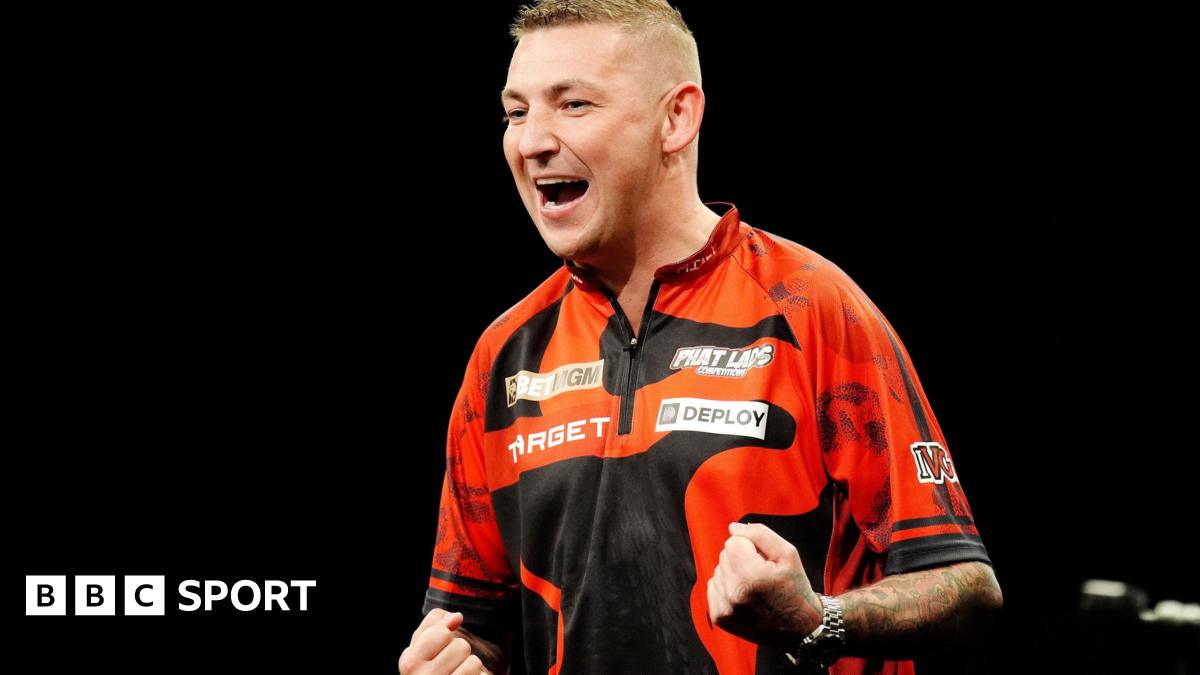ARTICLE AD BOX
 Sexton made his Ireland debut against Fiji at the age of 24
Sexton made his Ireland debut against Fiji at the age of 24"What did I do to get my first cap in this weather?"
Johnny Sexton cannot be accused of looking back on his Ireland debut through rose tinted glasses. It is hard to blame him. There is very little romance to be found on a wet, windy and freezing late November night.
This week, the week of his 100th cap, Sexton was asked to reflect on that first appearance against Fiji at the RDS Arena 12 years ago.
It was a good day at the office for the fly-half who kicked 16 points, but it wasn't quite the romantic occasion it so nearly was a week previous.
Ireland were playing Australia at Croke Park, the country's biggest stadium, where Brian O'Driscoll was the toast of the town on the day of his 100th Test appearance.
When Paddy Wallace went down with an injury Sexton was readied and had got as far as stepping over the white line only to be swiftly turned around as Wallace got back to his feet.
"I was gutted like," laughed Sexton this week when recalling his nearly moment.
"For the early part of the next week I was devastated I didn't get on. The first memory from the Fiji game is how bad the weather was."
O'Driscoll's 100th Test cap dovetailing with Sexton's debut would have provided a lovely bit of symmetry between the careers of two modern Irish greats - but that Sexton's debut, impressive though it was, was less glamorous of an occasion seems somehow a more apt setting.
Sexton's story in breaking through and building his legacy for both Leinster and Ireland owes as much if not more to grit and a peerless will to succeed than natural talent.
The fly-half had to fight through genuine greats of the game at both province and club in the form of Felipe Contepomi and Ronan O'Gara to establish himself, and was already 24 by the time he made his international debut.
At every level Sexton had to scrap hard for a chance, and through the 98 Ireland caps that have followed his debut he has never forgotten it.
"He is an unbelievable competitor. He drives himself hard and everybody around him hard," says former Ireland fly-half David Humphreys.
"I would argue that experience of having to fight for your place, learning from a very good player and having time to learn from mistakes benefitted him.
"One of the problems we have in the modern game is that our decision makers and the spine of our team don't play enough rugby.
"Johnny did play that rugby at (Sexton's club) St Mary's, and he got an understanding of the game not being as simple as it looks on a whiteboard or a video screen. It's about getting out there, playing and understanding how the game ebbs and flows."
 Sexton and head coach Joe Schmidt helped bring periods of huge success to both Leinster and Ireland
Sexton and head coach Joe Schmidt helped bring periods of huge success to both Leinster and IrelandWhen asked which individuals had the greatest impact in his career, few were surprised to hear Sexton include Joe Schmidt high on the list, the coach with whom he enjoyed immense success with Leinster and Ireland.
The two share a philosophy so similar that Leinster players of the time joked they were unsure if notes put up in team rooms signed 'JS' belonged to coach or fly-half.
They saw eye-to-eye on the importance of meticulous planning - setting gameplans and set-plays tailor made for each opponent.
Schmidt wanted a fly-half who knew the gameplan inside out and would ensure its execution- in Sexton he found the perfect dance partner.
"All the great 10s have the ability to shape the game in how they play, and also in the sense of the impact they have on the people around them," Humphreys says.
"Quite often the number 10, and especially Johnny as an especially strong leader, is quite often the conduit between the coach and what the coach wants, and delivering that on the pitch.
"His ability to deliver the style of play that Joe wanted both with Leinster and Ireland, that was a key factor in the success of both those teams.
"It's what every coach wants in terms of having that similar outlook in how the game is played - having a similar philosophy and a clear understanding of what it takes to be successful."
 At 36 Sexton remains the clear first choice fly-half in Ireland
At 36 Sexton remains the clear first choice fly-half in IrelandAt 36, every injury or bad performance attracts a new round of mildly panicked conversation in Ireland regarding the lack of an obvious successor to Sexton.
The reality is that he not only remains the country's top fly-half, but that recent years have seen the gap between Sexton and the chasing pack widen.
The conversation does not tend to focus on who is the best, but rather on the future prospects of an Ireland side that will one day be forced to carry on without their conductor-in-chief for the last decade.
One school of thought argues that preparations to ensure a smooth transition when that day comes should be underway with younger fly-halves receiving more game time. But the response remains the same: why would head coach Andy Farrell willingly take his best number 10 out of the team?
"Very simply when you play international rugby you want your best number 10 available," Humphreys says.
"If your best fly-half is 16 or 36 you pick him because you want to win the game. If you're an international coach your job is to take the team out and win the game.
"It's not about throwing in players here, there and everywhere. Get some momentum behind an Irish national team winning - give those players confidence, consistency of selection, pick your best team and go out and play."
There remains little doubt that Ireland's best team contains Sexton.
The soon-to-be centurion reiterated his position earlier in the week that as long as the desire burned bright he would stay in the game.
That he is banking his future prospects on determination and desire is not entirely surprising.
They have served him well so far.

 3 years ago
112
3 years ago
112








 English (US) ·
English (US) ·